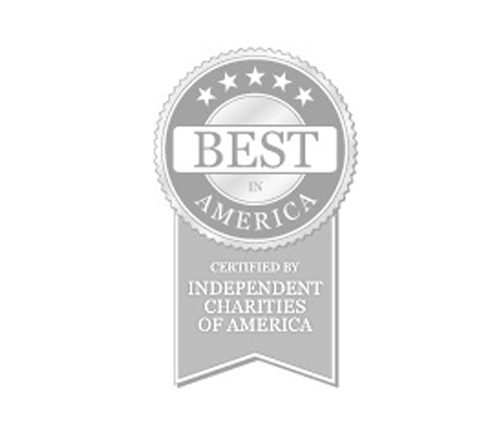The challenges for any post-permanency model are related to limited funding, complex relationship building, broad geography, multiple stakeholders, and shifting logic models. Making sense out of these components is compounded when the steering committee members are engaged solely through a voluntary basis. Keeping everything and everyone on track necessitates the development of a “backbone” organization.
Research from the consulting field on the changing dynamics in the social sector has noted the importance of a backbone organization. In 2011, the social sector consulting firm—FSG—wrote an influential article in the on collective impact strategies. FSG has influenced the field with its work in collective impact as strategies that move beyond the traditional collaborations of joint funding, private-public partnerships, and informal networks (Martin, Kania, Merchant, & Turner, 2012). The authors noted that social change and support on a larger scale requires broad cross-sector coordination and significant adaptive leadership.
Collective impact strategies involve a centralized infrastructure supported by a “backbone” organization where systems are robust but flexible and where data is relentlessly utilized in decision-making. Ultimately, partners in such a strategy improve the quality and efficiency of their work. Most importantly, beneficiaries are impacted and communities can demonstrate meaningful outcomes over time. Unfortunately, the field and funding of social services usually focuses on intervention strategies that are often narrowly focused and not integrated with other systems.
According to FSG the development of achieving any collective impact are due to five key conditions:
- Common Agenda
- Shared Measurement
- Mutually Reinforcing Activities
- Continuous Communication
- Backbone Support
FSG defines backbone support as follows: “Creating and managing collective impact requires a separate organization(s) with staff and a specific set of skills to serve as the backbone for the entire initiative and coordinate participating organizations and agencies” (Martin, Kania, Merchant, & Turner, 2012, p. 2).
FSG further developed the concept of a backbone organization that focus on the following sequential activities required to yield greater impact:
- Guide Vision and Strategy
- Support Aligned Activities
- Establish Shared Measurement Practices
- Build Public Will
- Advance Policy
- Mobilize Funding
In the 2013 focus groups that NRCA held with representatives from 11 states, participants clearly identified the nucleus of backbone organizations that were especially engaging on guiding strategy and supporting aligned activities.
A great example of a “backbone” resulting from a strong public-private partnership is in Connecticut. In 2003, one of the Department of Children and Families’ state’s Deputy Commissioner for child welfare was an initial champion for a community-based and coordinated approach. The state’s Deputy Commissioner used an Employee Assistance Benefit model as the basis of a coordinating approach for post-permanency activities, thereby focusing on a single point of access from the healthcare industry. The result was the establishment of the Adoption Assistance Program (AAP) at the University of Connecticut Health Center, a $1 billion comprehensive health system with over 5,000 employees. AAP, through contract, has been designated as a backbone organization for coordinating and engaging communities.
With only four case managers and three Social Work staff housed within the AAP at The Health Center statewide, AAP has leveraged opportunities while upholding the vision of a single point of entry and quick access. AAP provides support to 500 families a year, mainly around behavioral issues in the home and school. According to Allyson Powell, Assistant Program Director, “The single biggest reason for success is having a person on the phone with a 24 hour call back and 48 hour in the home for the service.”
AAP’s integration with the state’s largest academic health system has benefited families without additional cost to the state. Without charging, UConn’s AAP provides consultation to therapists and has helped both parents and providers navigate the state’s managed care system. Experience in managed care has been positive; many providers now accept state insurance and parents are paying less for treatment from an out of pocket perspective. AAP’s connection with a health system has also assisted in recruiting providers for specialized services. And such expansion has also been supported by additional competency-based trainings. Through partnerships with the University of Maryland’s Center for Adoption Support and Education, AAP has helped launch a post-master’s certification program on adoptions competencies.
True to its evolution to meet the needs of families, AAP has been given flexibility by the state, particularly with greater focus on educational partnerships. While outpatient therapeutic services are leveraged with managed care, AAP has been able to focus more on case management within the home. This service is coupled with a dedicated website with numerous hyperlinks and a lending library including information on connecting with support groups of the state’s Adoption Community Network. This “network” is a compilation of adoptive families, adoption professionals, therapists, educators and many other adoption champions working together with the vision of forming a collaborative partnership designed to support adoptive and relative caregiver parenting.
Another model for a backbone organization is the formation a lead agency. Formed in 2007, IowaKidsNet is a collaboration of six agencies that began doing post-adoption services in 2009. With five service areas in the state, IowaKidsNet manages the statewide referral line and provides advocacy and referrals with the state’s managed care entity. For the last four years, this model has been successful in building public will by conducting collaboration meetings with numerous stakeholders in the Des Moines area as a way to ensure communication, attract new providers, and shared understanding. Activities have led to the creation of an Adoptions Champions Program, a group of “recruited volunteers” of adoptive parents who co-facilitate support groups and act as ambassadors. Today, about seven support groups are actively meeting in the Des Moines area.
Iowa is also a good example of the importance of a backbone organization effectively reaching out to a growing and dispersed population of adoptive parents. Beginning in 2009, IowaKidsNet had to creatively reach out to adoptive families, of which there are over 9,000 adoptive children in the state. By working through the foster parent associations first, IowaKidsNet leveraged outreach by focusing on professional fairs and conferences with school social workers, nurses, and psychiatrists. IowaKidsNet is now having conversations with other grass roots organizations about resource coordination, including those founded by adoptive parents who are supporting others through free clothes closets. It’s also reevaluating the way it works with volunteers as it views working with youth groups, college career groups, churches, schools, and teachers as an effective way to engage others and support adoptive/foster parents. Despite its management of a referral line and service delivery process, IowaKidsNet clearly regards itself as a bridge for parents to generate and create new community resources at no taxpayer cost.

